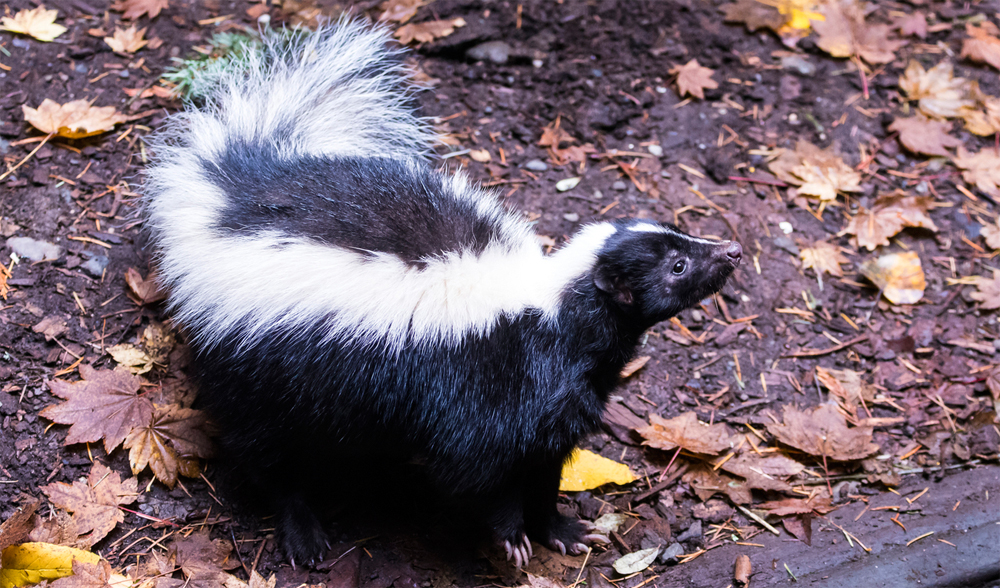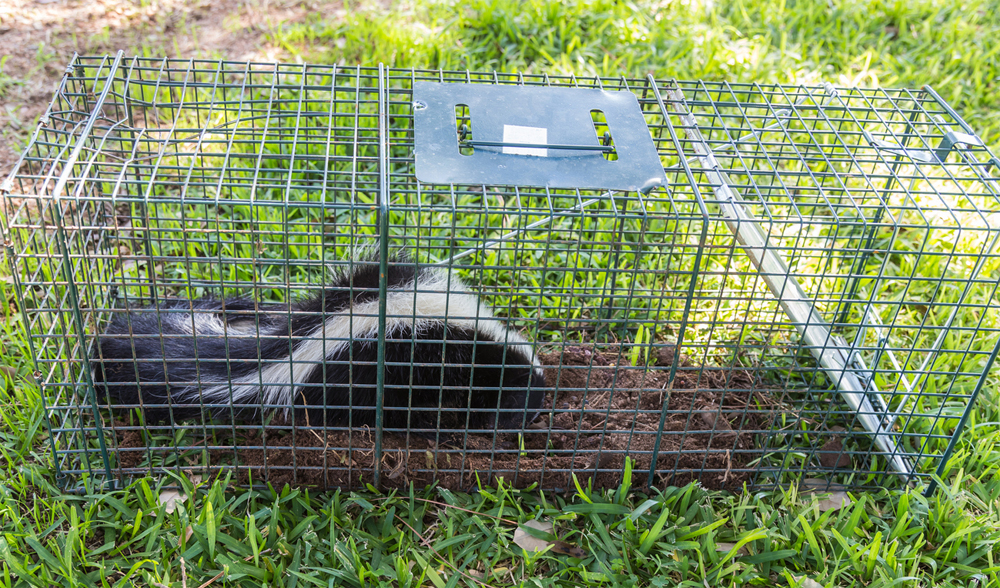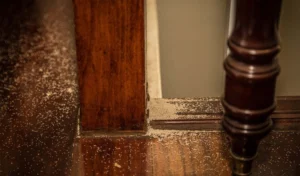Skunks are remarkably peaceful and non-aggressive creatures. In addition, they have a limited eyesight, which means they rely on other means of defense. When feeling threatened, skunks will only release their defensive spray as a last resort. They typically provide clear warnings by stamping their front feet, giving you ample opportunity to retreat. The foul-smelling spray, emitted from their anal glands, is the skunk’s primary defense mechanism. While skunks are capable of biting, this is not a reliable defense against larger predators.

Solve the Problem with Compassion
Skunks are primarily nocturnal creatures, preferring to forage and be active during the night. Nevertheless, it is not unusual to encounter healthy skunks during daylight hours as well.
In the event that you come across an injured skunk, it is recommended to contact a state-licensed wildlife rehabilitator for assistance. It is helpful to keep the contact information of a rehabilitator readily accessible, either in your wallet or programmed into your phone. Your local humane society, animal control department, or parks department can often provide you with the necessary information to reach a licensed wildlife rehabilitator.
If you encounter a sick-looking skunk, it is important to note that it is more likely to have distemper rather than rabies, and it’s reassuring that distemper is not contagious to humans. In such cases, it is crucial not to contact a “nuisance wildlife” trapper or “pest control” service, as their usual approach involves drowning skunks to avoid being sprayed. Instead, reach out to your local animal control department or humane society, and kindly ask if they would use an injection of sodium pentobarbital for a painless euthanasia, should it become necessary. Their professional assistance will ensure the skunk’s well-being and proper handling of the situation.
In the event that the local animal control department or humane society does not utilize sodium pentobarbital for euthanasia, kindly inquire whether they can arrange for the skunk to be picked up or recommend a suitable facility for its transportation. Additionally, it is crucial to promptly notify the related department so they can establish contact with the relevant agency and offer their assistance in developing a humane protocol for euthanizing animals using lethal injections. You may also ask that whether they can provide tools like Human and Live Animal Traps by which you can lure a skunk into. It is important to remain at the scene and keep visual contact with the skunk until appropriate help has arrived.
To deter skunks from visiting your property, focus on addressing the areas that attract them.
Skunks primarily feed on insects, including grubs. They, along with raccoons, squirrels, moles, starlings, grackles, and crows, may dig holes in lawns and gardens while searching for these grubs. This digging activity results in small, cone-shaped holes and areas of upturned soil. Some gardeners appreciate the presence of skunks and other grub-eating animals as they help control the grub population naturally, sparing the need for manual grub removal.
To deter skunks and other animals from coming to your property, ensure that your garbage containers are always securely sealed. Additionally, discourage the feeding of wildlife in your vicinity. Artificial food sources not only attract the intended animals but also a variety of wildlife species.
To prevent skunks from establishing dens on your property, it’s important to seal off sheds and close any openings beneath porches and buildings. This is also effective for the prevent of the entering of rats or mice. Similar to raccoons, skunks create dens especially when they are preparing to give birth to their young. If skunks have already taken up residence, the best initial approach is to exercise tolerance. Once the young skunks are old enough, the family will naturally leave the area.

However, if necessary, you can easily encourage the skunks to relocate by making the den area inhospitable. This can be achieved by introducing lights, radios, and ammonia-soaked clothes. These measures will prompt the mother skunk to move her babies to a different location. Alternatively, if there are no babies in the den, you can consider installing a one-way door.
If you find skunks in your home, use tools such as Humane & Live Animal Traps to contain them. These tools can help you safely get the skunk where it’s supposed to go. The use of a live animal trap is easy. Skunks like to eat honey, molasses, peanut butter on bread, fish eggs, etc. All of these can be used as the bait since they are what a skunk likes.
Get Help from Safe-killer
Safe-killer offers reliable Humane & Live Animal Traps for your convenient solution to the skunk problem. They are your best choices for taking invaded animals out of your home including rats, mice, squirrels, chipmunks, hamster, weasels, etc. They are well made with competitive pricing. Welcome to Contact Us for the details about our purchase.



